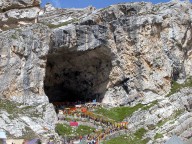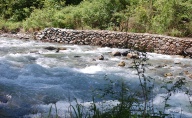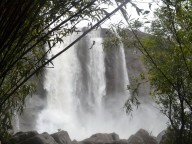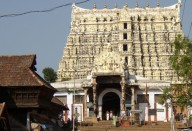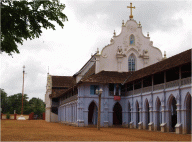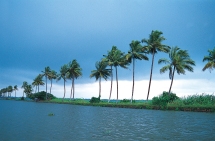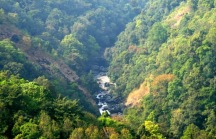Spice up Your Holidays with the Best Tourist Places in the World
December 29, 2012 Leave a comment
Since the people in the world are thoroughly busy at the present time, taking a holiday trip to the best tourist places in the world is well to have fun with families and to enjoy holidays. Nowadays tourism has become a popular global leisure activity and is vital for many countries. Every tourist spots in the world has its own inbuilt or demonstrated cultural importance, past significance, pristine or built splendor, or enjoyment occasions. India is one of such tourist countries. Here are some best attractions of India as well as of the world.
Kerala
A perfect example of natural beauty is Kerala. Being a southern state of Indian subcontinent, Kerala offers the globe trotters a pristine beauty of nature. For its natural wonders and rich culture, it is well known as the Gods Own Country. There are lots of hill stations, waterfalls, wildlife sanctuaries, etc and are the perfect destinations to experience the natural amazement of Kerala. Kerala is a wonderful location to chill out holidays and to enjoy your honeymoon trip too. Backwaters of Kerala are the best way to acquire the attractiveness of this southernmost state of India. Nowadays, Kerala is famous for the world’s richest temple, Sri Padmanabhaswami Temple, which is in the capital district of Kerala. Since the west is a coastal side of Arabian Sea, globe trotters can enjoy the fantastic beaches as well. Kovalam beach is the famous beach side of Kerala. Read reviews about Kerala tourist attractions.
Taj Mahal
The prime attraction of India which is a standalone tomb represents India in the world is Taj Mahal. Included in Seven Wonders of the World, Taj Mahal is the fore most UNESCO world heritage sites of India as well as in the world. With its magnificent architecture combinations and immense structure, this tomb draws most tourists to India. The combination of Persian and Turkish architectures with the Mughal architecture makes Taj Mahal an individual one in the world. This tomb is a perfect example of traditional architectures of India and stands a step forward of any other attractions in India. It can be seen similar by the four sides and the main attraction is the marble architecture that gets on the top which is decorated with a lotus design and its shape is emphasized by four smaller domed kiosks placed at its corners. For this reason that of its shape, the dome is frequently named an onion dome or guava dome.
Wagah Border
Wagah Border is the only road border crossing between India and the neighboring country Pakistan. The most exciting feature of this village is that the eastern half remains in India and the western half is in Pakistan. It is predominantly well known for the sophisticated Wagah border ceremonial that takes place at the border gate before sunset each day. The ceremony begins with a vociferous parade by the soldiers from both the sides, and ends up in the absolutely harmonized lowering of the two nations’ flags. It is called the beating retreat border ceremonial on the international level. The manifestation of the ceremony exerts a pull on many visitors from both sides of the border, as well as global tourists.
Vaishno Devi Mandir
One of the holy Hindu temples dedicated to Shakti, Vaishno Devi Mandir is situated in the hills of Vaishno Devi in Jammu and Kashmir, India. Vaishno Devi, also known as Mata Rani and Vaishnavi, is a manifestation of the Mother Goddess in Hinduism. Near to the town of Katra, in the Reasi district of Jammu and Kashmir, this Hindu worship place is one of the most honored places of worship and the second most visited religious shrine in India. The way to towards Vaishno Devi Mandir is precipitous and entails a long walk climbing the hill. On the other hand helicopter services can be in use for a large part of the journey. The Trust tenders contented hang about for pilgrims.
Amarnath Cave
The well known shrine dedicated to Lord Shiva, Amarnath cave, is also situated in the state of Jammu and Kashmir. This shrine is considered to be one of the holiest shrines of Hinduism and can be reached through Pahalgam town of the state. Surrounded by the snowy mountains, the cave is itself covered with snow most time of the year. It is open for pilgrims for a short period of time in summer when it is cleared off with snow. The most attracting feature of this cave is the Lingam formed with ice. It has been said that the lingam grows and shrinks with the phases of the moon reaching its height during the summer festival but there are no scientific evidence for this belief. Because of this feature, a mass number of tourists visit Amarnath Cave in summer season.
Kashmir
The heaven of earth, Kashmir said to be the paradise. After rebounding the tourism in Kashmir Valleys in the past years and is became one of the best tourist places in the world. The famous adventure in Kashmir is skiing. Gulmarg, which is named for its amazing natural beauty and is counted as the unique tourist destination, is the famous ski resort here in Kashmir and is well known across the country. Kashmir, the paradise of earth, is also a home to the highest green golf course. Sonamarg, Raghunath Temple, Bahu Fort, Mubarak Mandi Palace, Peer Baba, etc are the rest attractions in Kashmir to enjoy the vacations.
Shirdi
The foremost feature of Shirdi in Maharashtra is the Sai Baba Mandir. Popularly known as the Child of God, Sai Baba preached endurance towards all beliefs and the message of universal brotherhood. Each disorder at Shirdi turns around the vast temple complex dedicated to Sai Baba. Devotees start queuing up in the early hours of sunrise to catch a quick look and seek out the blessings of the life-size statue of Sai Baba. There are other places of interest that devotees can visit as well including Dwarkamani Mosque where the Baba pondered and slept on alternate nights. Near the mosque, in a hallway is the eternal flame that burns day and night. Other places of importance are the Gurusthan, the Kandoba Temple, Shani Mandir, Narsimha Mandir, Changdev Maharaj Samadhi and the Sakori Ashram.
Rameshwaram Temple
Pilgrimage tour is not complete devoid of taking a trip to Rameshwaram. The temple in Rameshwaram looks forward to thousands of pilgrims every year. Rameshwaram Temple is one of the most sacred places in the city and it is whispered that whosoever visit Varanasi, is made-up to take Rameshwaram Temple tour to complete his pilgrimage. By way of exceptional architecture, Rameshwaram Temple shrine is decorated with huge Gopurams, Nandi and monolithic walls. Two major festivals celebrated with great splendor and eagerness at this sacrosanct shrine here in Rameshwaram are Bhrammotsavams held in the Tamil months of Aadi and Maasi and Rama’s worship in the month of Aani.
Munnar
Munnar is well known as the Heaven of South India. The tea plantations on the Munnar hills together with the mist surrounded offers the best scenario for the tourists. Situated in the Idukki district of Kerala, Munnar is an exceptionally extravagant and charismatically enchanting hill station to be found on Western Ghats. Munnar has the whole thing a nature buff expects and presents plentiful opportunities for those who look for a holiday from it. With a innumerable assortment of amuse options, Munnar encourages all kinds of vacationers such as families, children, honeymooning couples, etc and by means of a mass number of tourists every year, Munnar became one of the best tourist places in the world. Eravikulam National Park is one of the prime attractions of Munnar which is an abode of the endangered Nilgiri Tahr.
Gateway of India
The Taj Mahal of Mumbai, the Gateway of India, is positioned on the sea front in the Apollo Bunder area of South Mumbai. This sumptuous testimonial was built in memory of the British king George V and Queen Mary. Nowadays this shrine became the foremost attraction of the city. Its architecture is a great combination of traditional Gujarat architecture with Roman Triumphal arch. Known formerly as the Apollo Pier, the Gateway of India is a most significant tourist appeal and a well-liked congregation spot too. Thousands of day-trippers from all over the world visit this marvelous monument every single day throughout the year. Boat services are to be had in the close at hand waterfront and tourists can enjoy the improbable boat ride from Gateway of India to Elephanta Island. Representing the Indo- Saracen architectural style with the traditional Muslim architectural excellence, this monument almost stands as an identity of the city.




